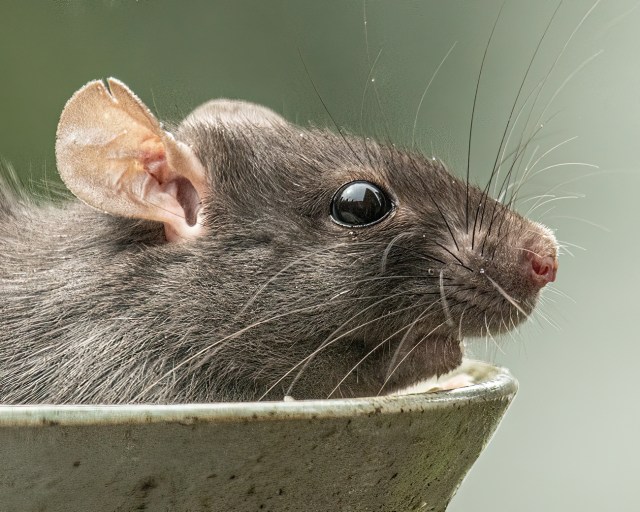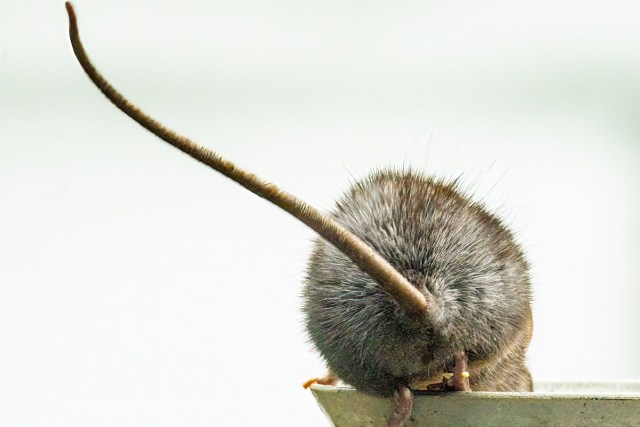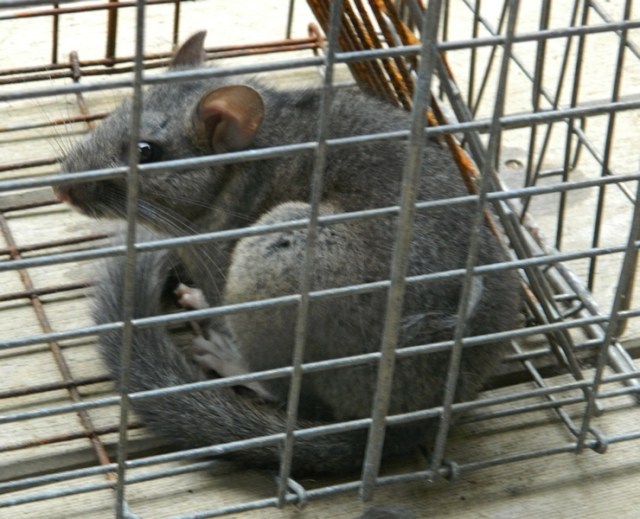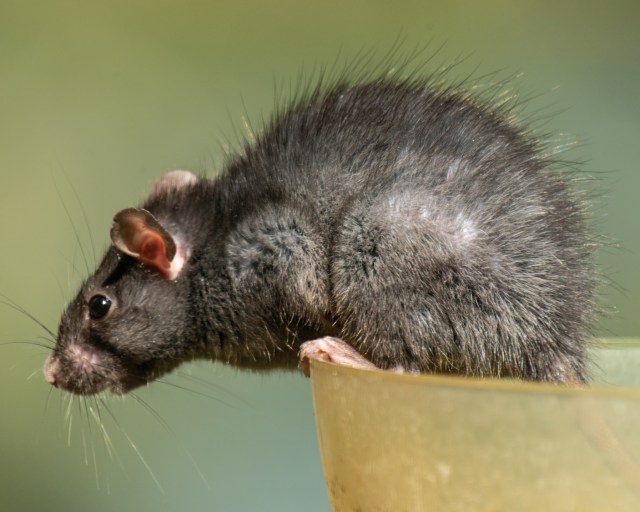

The Rat Trap
Humans often detest the roof rat, a variety of common black rat, for the very traits that have enabled both humans and the rat to spread worldwide. Rats are exceptionally adaptable, eat a wide variety of food, and travel well in boats and other vehicles. They have an exceptionally bad rap because they have carried deadly plagues. So have humans, of course. In the U.S. far more humans get diseases from dogs, cats, and other pets than from rats. Those zoonotic diseases include scabies, eye diseases, rabies, and a variety of parasitic worms. (Kissing pets is risky romance.)

The tail is as long as the body, 7 or 8 inches (17 – 19 cm)
Rats have made their way into a lot of human vocabulary. This picture illustrates, “I don’t give a rat’s ass for . . . ” All square rigged sailing ships of a few centuries ago had “ratlines” for climbing into the rigging. A person who tells secrets of bad deeds has “ratted out” the villain and is called a “rat”. And although rats do not have a particularly strong smell, someone who suspects trouble or an evil doer says, “I smell a rat.” A person who is too busy at work is in the “rat race.” Children before they can walk are sometimes called “rug rats”. And a person soaked by rain might “look like a drowned rat.” And people who are running away from suspected trouble are “like rats deserting a sinking ship.”

This is a native Oregon woodrat, distinguished by its furry tail.

The roof rat or black rat comes in several colors from almost black to brown.

